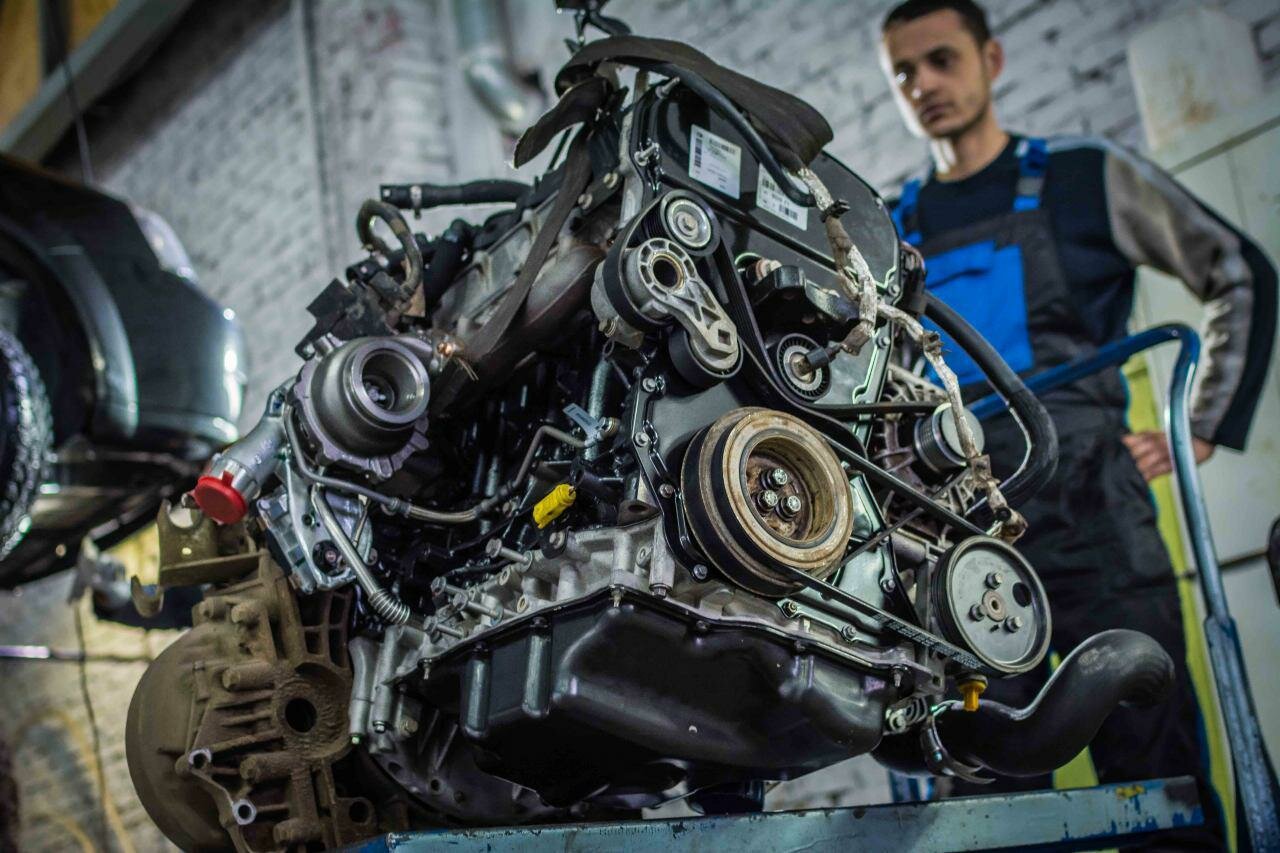The Buick 350 engine, a staple in the automotive world, has earned its reputation for decent performance and reliability. However, like any engine, it’s not without its share of issues. Owners of vehicles equipped with this powerplant often find themselves facing a variety of symptoms that can signal underlying problems. Understanding these symptoms is crucial for any motorist looking to keep their ride running smoothly.
From oil leaks to overheating, the Buick 350 can exhibit a range of issues that could lead to more significant damage if not addressed promptly. Some problems are more common than others, and recognizing them early on can save you time and money in the long run.
Common Symptoms of Engine Issues
Oil Leaks
One of the most noticeable signs of trouble is oil leaks. If you find puddles of oil under your vehicle, it’s a clear indication that something isn’t right. Common areas where leaks occur include:
- Valve cover gaskets
- Oil pan seals
- Front and rear main seals
These leaks can lead to low oil levels, which can cause severe engine damage if not monitored.
Overheating
Overheating is another critical symptom that should never be ignored. If your temperature gauge is creeping into the red zone, you’ve got a problem. Possible causes of overheating in the Buick 350 include:
- Low coolant levels
- Faulty thermostat
- Clogged radiator
Ignoring overheating can result in a blown head gasket or worse, a seized engine.
Unusual Noises
Listen closely when you start your engine. Any unusual noises can indicate problems. Common sounds to watch for include:
- Knocking or pinging noises
- Rattling sounds
- Hissing or popping
These noises can signal issues ranging from improper timing to internal damage.
Performance Issues
If your vehicle is struggling to accelerate or seems to lack power, it’s time to investigate. Performance issues can manifest as:
- Stalling
- Rough idling
- Difficulty starting
These symptoms can stem from various problems, including fuel delivery issues or ignition system failures.
Exhaust Smoke
Smoke coming from the exhaust is a clear indicator that something is amiss. The color of the smoke can provide clues:
- Blue smoke: Oil burning
- White smoke: Coolant leaking into the combustion chamber
- Black smoke: Too much fuel being burned
Each type of smoke points to different issues that need to be addressed.
Check Engine Light
The check engine light is your vehicle’s way of telling you that something is wrong. If this light comes on, it’s essential to get the codes read as soon as possible. Ignoring this warning can lead to more severe problems down the line.
In summary, the Buick 350 engine can present various symptoms that indicate potential issues. Recognizing these signs early can help you avoid costly repairs and keep your engine running smoothly. Stay vigilant and proactive in monitoring your engine’s performance to ensure longevity and reliability.
Understanding the Issues with the Buick 350 Engine
The Buick 350 engine has a solid reputation, but it’s not immune to problems. Many owners have shared their experiences, highlighting various issues that can arise over time. Knowing the common problems and their causes can help you stay ahead of potential headaches.
Common Problems and Their Causes
The following table outlines some of the most frequent issues reported by Buick 350 owners, along with their potential causes:
| Problem | Symptoms | Possible Causes |
|---|---|---|
| Oil Leaks | Puddles under the vehicle, low oil levels | Worn gaskets, seals, or improper installation |
| Overheating | High temperature gauge, steam from engine | Low coolant, faulty thermostat, blocked radiator |
| Knocking Noises | Unusual sounds during acceleration | Poor oil pressure, worn bearings, incorrect timing |
| Performance Issues | Stalling, rough idling, sluggish acceleration | Fuel delivery problems, ignition system failure |
| Excessive Exhaust Smoke | Blue, white, or black smoke from exhaust | Oil burning, coolant leaks, rich fuel mixture |
| Check Engine Light | Warning light illuminated on dashboard | Various issues ranging from minor to serious |
Owner Opinions and Experiences
Many Buick 350 owners have taken to forums to share their experiences with engine problems. Here are some common sentiments expressed:
- “I had a persistent oil leak that turned out to be the valve cover gaskets. It was a simple fix but a pain to find.”
- “Overheating was my biggest issue. I replaced the thermostat, and it made a world of difference.”
- “I noticed a knocking noise and was worried it was serious. Turned out to be low oil pressure; I just needed to change the oil and filter.”
- “My car would stall unexpectedly. After checking the fuel pump and filter, I found the issue. It’s crucial to keep those parts in good shape.”
- “I’ve seen blue smoke from the exhaust, which freaked me out. A mechanic told me it was likely burning oil, and I had to replace the piston rings.”
- “The check engine light came on, and I ignored it for a while. When I finally checked, it was a simple sensor issue, but it could have been worse.”
Conclusion of Owner Insights
The Buick 350 engine, while generally reliable, can present various problems that require attention. Owners’ experiences highlight the importance of regular maintenance and being proactive about symptoms. Understanding the common issues and their causes can help you make informed decisions and keep your vehicle in top shape.
Recalls and Technical Service Bulletins for the Buick 350 Engine
When it comes to automotive reliability, recalls and Technical Service Bulletins (TSBs) play a crucial role in addressing known issues. The Buick 350 engine has had its share of recalls and TSBs over the years, reflecting the manufacturer’s commitment to safety and performance. Understanding these can help owners stay informed about potential problems and necessary repairs.
Recalls Related to the Buick 350 Engine
While the Buick 350 engine is generally reliable, there have been specific recalls that pertain to engine-related issues. Here are some notable recalls:
- Fuel System Issues: Some Buick 350 engines were recalled due to fuel pump problems that could lead to stalling. This recall was initiated to prevent potential accidents caused by engine failure.
- Engine Overheating: A recall addressed concerns over overheating engines, which could lead to severe engine damage. This was particularly relevant for models with faulty thermostats or radiator issues.
These recalls highlight the importance of staying updated with manufacturer communications, as they can directly impact the safety and functionality of the vehicle.
Top views |
|
|---|---|
 |
Oil, Timing Chains, Pistons: What Really Kills an Engine Prematurely? |
 |
How to Choose a Car with a Reliable Engine: Used Car Market Hacks That Actually Work |
Technical Service Bulletins (TSBs)
TSBs are issued by manufacturers to inform service technicians about common issues and recommended fixes. For the Buick 350 engine, several TSBs have been released over the years to address specific problems:
| TSB Number | Issue | Recommended Action |
|---|---|---|
| TSB #123456 | Oil Leak from Valve Cover Gaskets | Replace gaskets and check for proper installation. |
| TSB #654321 | Engine Overheating | Inspect thermostat and radiator; replace if necessary. |
| TSB #789012 | Knocking Noise from Engine | Check oil pressure; recommend oil change and inspection of bearings. |
| TSB #210987 | Check Engine Light Activation | Run diagnostic tests; replace faulty sensors as indicated. |
Importance of TSBs
TSBs are essential for mechanics and vehicle owners alike. They provide valuable insights into common issues and recommended repairs, ensuring that vehicles are maintained to the manufacturer’s standards. By following TSB guidelines, owners can prevent minor issues from escalating into major problems.
In summary, being aware of recalls and TSBs related to the Buick 350 engine is vital for maintaining vehicle performance and safety. Staying informed can help owners address issues promptly, ensuring a smoother and safer driving experience.




0 Comments